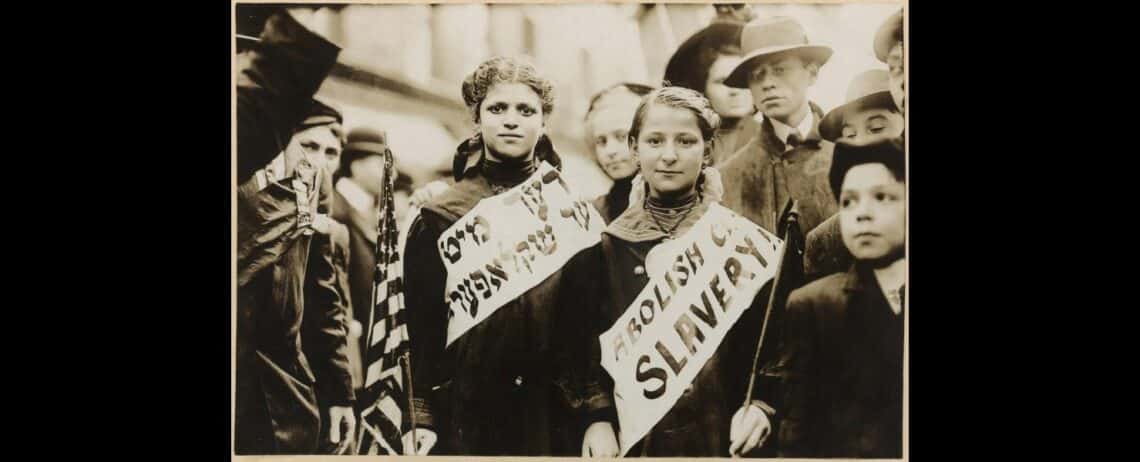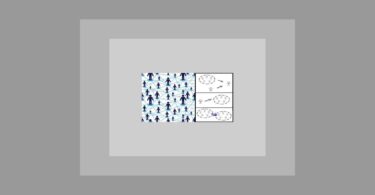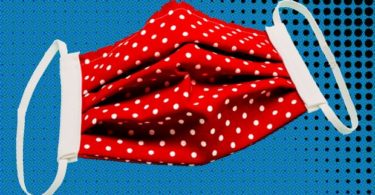‘… La Amistad was a ship notable as the scene of a revolt by African captives being transported from Havana to Puerto Principe, Cuba… The Africans took control of the ship in July 1839 and were captured off the coast of Long Island by the USS … [and thus became] a symbol in the movement to abolish slavery… [1]‘
The La Amistad Affair was an international cause celebre in America and Britain, when the slave cargo revolted and took over the ship La Amistad transporting them to Cuba in 1839[2]. This famous and historic case is documented in exhaustive detail in very many books and articles scattered across academia and many specialist societies.
However, as usual, the homeopathic core central to the defenders of the La Amistad slaves has been airbrushed out of all the official histories… when British and American homeopaths immediately united to support the slaves… so shall we airbrush them back in?
‘… The Amistad was taken under control by the United States, resulting in a US Supreme Court case (1841) over the status of the Africans, as importation of slaves into the US had been prohibited since 1808….[3]’‘.. The Supreme Court decided in favor of the Africans, stating that they were free individuals. Kidnapped and transported illegally, they had never been slaves… “…it was the ultimate right of all human beings in extreme cases to resist oppression, and to apply force against ruinous injustice.” The opinion asserted the Africans’ right to resist “unlawful” slavery. The Court ordered the immediate release of the Amistad Africans. Thirty five of the survivors were returned to their homeland (the others died at sea or in prison while awaiting trial)…[4]’
‘… New York December 14, 1839, [to] Joseph Sturge Birmingham, My dear Friend, When Dr. Madden was here he, in conjunction with the counsel for the poor Africans brought here in the schooner Amistad, addressed a letter to the British members of the Mixt Commission at the Havana, requesting them to procure certified copies of the Treaties between England and Spain of 1814 and 1815 and Annexes…
We cannot conclude without expressing our gratification to observe the truly British feeling which animates your community on the subject of the wrongs to which those unhappy victims of the Slave trade have been exposed, and the peculiar zeal and ability you manifest in their behalf…
We have in books (our own law books and in British books) copies of said Treaties &c, but they cannot be received in Courts of Justice. Certified copies are indispensable. It would be desirable to obtain them from Spanish sources, but if this cannot be done we must obtain them from the British authorities.
To ensure copies at any rate and as speedily as possible, Theodore Sedwick Esqr. Of counsel of the Africans, has, by this vessel, written to William Sharpe Esq. of the firm of Taylor, Sharpe, Field & Jackson, Solicitors, 41 Bedford Row, London for certified copies of the Treaties between England & Spain of 1814 and 1815 and Annexes, and by my permission has directed him to apply to you for the fees &c…
If you can get Dr. Madden or Mr. Scoble to see Mr. Sharpe, and urge him to thoroughness & despatch we shall be greatly obliged. We hope also that Dr. Madden will get instructions sent from the proper authority to the British Commissioners to afford every facility in their power in this case.
We are most unfortunate in attempts to procure testimony in several respects. Our own Sec. Of State (Mr. Forsyth [John Forsyth (1780-1841)]) is a Slaveholder [who supported slavery]—we get no facilities from our own Government—and the British Commissioners even are afraid of offending the Spaniards or their own Govt by performing an act not strictly, as they conceive, within the line of their duty.
Dr. Madden’s letter to Dr. Channing on the Slave trade &c,. is published & I hope to send you a copy by this opportunity. It is a severe thing, but justly deserved, & will, I hope, do much good… Affect & truly your’s, Lewis Tappan…[5]’
Personnel: with apologies for the complexity of this busy homeopathic network behind the scenes! However, for the purposes of this short article, I have kept it brief, but further research in this area will reveal many more interesting ‘secrets’…
Richard Robert Madden (1798-1886) was an orthodox Irish doctor who converted to homeopathy. Madden was a patient of Frederick Hervey Foster Quin (1799-1879)[6], a British orthodox physician who converted to homeopathy to become one of the very first homeopaths in Britain.
Quin was the founder of the Brighton Homeopathic Institution for the Diseases of Children (1844-?1910), Consulting Physician to the Hahnemann Hospital at 39 Bloomsbury Square (1847-1853), and a member of the London Association for the Protection of Homeopathic Students and Practitioners (1851-1867).
‘… in 1833, [Madden] went out to Jamaica, preparatory to taking office there as one of the special magistrates… appointed to administer the British Emancipation Act, which was to go into effect in August, 1834. Difficulties connected with the working of the apprenticeship system brought him into collision with the planters of Kingston and, in consequence, he resigned his magistracy in November, 1834…
En route for England, he visited the United States and made himself somewhat acquainted with conditions there, incident to slavery. In 1836, he was appointed judge arbitrator in the Mixed Court of Commission at Havana and continued about three years in Cuba, “first as a commissioner of the Mixed Court, and second as H. B. M. Superintendent of Liberated Africans…[7]’) ‘…
In 1847, Dr. Madden was again in British employ, having been appointed to a post in Western Australia, which included that of Protector of Aborigines. It was in the year of this appointment that he wrote the letter, to which incidental reference has been made in the Introduction, advising an enlistment of the sympathy and help of the Pope in the cause of anti-slavery (Letter to the British and Foreign Anti-Slavery Society Committee, April 10, 1847)...[8]’
In 1839, Madden was in New York to give evidence for the defense of the Amistad freed slaves. In 1840, Madden was appointed Special Commissioner of the British Territories in the West African Coast, appointed to stamp out slavery in this region. In 1848, Madden was back in London where he became a patient of Frederick Hervey Foster Quin and converted to homeopathy to become the consulting physician at the Hahnemann Hospital at 39 Bloomsbury Square (1847-1853).
James John Garth Wilkinson 1812-1899[9] [10], a British orthodox doctor, Fellow of the Royal Geographical Society 1830[11] who converted to homeopathy and graduated from the Hahnemann College in Philadelphia (1848-1925), and became a surgeon at the Hahnemann Hospital 39 Bloomsbury Square (1847-1853) and a member of the Hahnemann Medical Society at 16 Bulstrode Street London W1 (1850-1859).
Garth Wilkinson knew Edwin Wilkins Field (1804-1871)[12], an English Unitarian Divine, through[13] the Unitarian Church of England 1774, and through his father James John Wilkinson senior (1780-?1858), who ran a legal firm at 1 Pump Court Temple. Sharpe, Field & Jackson[14], Solicitors, 41 Bedford Row, comprised Samuel Sharpe (1799-1881) who lived in Stoke Newington Church Street, London N16, was associated with the Newington Green Dissenters Chapel 1708.
Samuel Sharpe was also a member of the South Place Ethical Society 1787 (Now Conway Hall Ethical Society 2012). Edwin Wilkins Field was a radical English reform lawyer and solicitor[15] for the British and Foreign Unitarian Association 1825.
Benjamin Wikley Jackson (?-?) is more difficult to identify at this time. Garth Wilkinson would retain a lifelong conviction to support African missionaries as a result of his close friendships with these extraordinary men and with his homeopathic colleague Madden.
Garth was the first person[16] to award any accolade to Edward Wilmott Blyden (1832-1912), a free born Nigerian American who lived in Sierra Leone and became a politician and the Liberian Ambassador to England and America.
Garth Wilkinson dedicated his book The African and the True Christian Religion Wilkinson 1892[17], to Blyden as a sequel to Blyden’s Christianity, Islam and the Negro Race 1888[18]. As a result, Blyden gave a ‘… very remarkable speech…[to the AGM of the Swedenborg Society 1810 in 1892, and]… spoke eloquently about the campaign for the abolition of the slave trade and the part played in that campaign by early Swedenborgians, and then about Islam in Africa and the role Swedenborg’s writings could play in furthering relations between Christians and Muslims… [19]’
John Epps (1805-1869)[20] was an English physician who converted to homeopathy[21] [22], medical graduate of the University of Edinburgh 1582, lecturer on materia medica and chemistry, director of the Royal Jennerian and London Vaccine Institutions 1806 (later the National Vaccine Institution 1809) and a member of the committee of the Westminster Medical Society (1809-1851). John Epps lectured widely on many topics, gaining radical, robust political muscle and a wide influential network of movers and shakers. He would become a major influence and mentor to Garth Wilkinson for many years.
Peter Stuart (?1788-1888)[23], known as the ‘Ditton Doctor’. Peter Stuart was a Liverpool ship owner and merchant who laid the foundation of a vast Imperial trade network for the British Empire (1490-1949) throughout the 19th century.
As a Lay Homeopath, Peter Stuart devoted one afternoon a week for forty years to dispense homeopathic medication to the poor, and he spent many years collecting relevant documents and memorabilia relating to Hahnemann’s life. Peter Stuart also named his ships for the homeopathic cause, as they plied the oceans of the world.
He founded the firm Stuart and Douglas 1845[24] on the Brass River in West Africa, and banished the African Slave Trade (16th-19th century) from that region entirely ‘… he was proud of the fact that he never made a cent out of the slave trade… [25]‘
Peter Stuart had also been a close friend of John Epps since 1843 and he was involved in many of John Epps’ political campaigns, including The Corn Laws (1815-1846) and the Unification of Italy (1815-1871). No doubt with the valued assistance of Peter Stuart, I suspect John Epps and Garth Wilkinson were the active and vibrating conduit between these three men, Sharpe, Field & Jackson.
William Ellery Channing (1780-1842) was a member of the prestigious American Channing family who were ardent supporters and practitioners of homeopathy. William Ellery Channing was a Universalist preacher who became the mentor of Elizabeth Palmer Peabody (1804-1894), the daughter of homeopath Nathaniel Peabody (?-?), who sold his homeopathic remedies in her famous shop, the Elizabeth Palmer Peabody’s West Street Bookstore, where the elite of Boston met to socialise.
Elizabeth Palmer Peabody was also a member of the Transcendental Club (1836-1840), which spawned The Dial: a Journal in a New Spirit (1840-1929). Elizabeth Palmer Peabody was the sister of Mary Tyler Peabody Mann (1807-1887), the wife of Horace Mann (1796-1859), an American politician[26] who was a patient of James John Garth Wilkinson.
Joseph Sturge (1793-1859)[27] son of a farmer in Gloucestershire, was an English Quaker, abolitionist and activist, an advocate of homeopathy, Sturge founded the British and Foreign Anti-Slavery Society (now Anti-Slavery International 1839). He worked throughout his life in radical political actions supporting pacifism, working-class rights, and the universal emancipation of slaves.
John Scoble (1799-1877) was a British abolitionist and émigré, and a political figure in Canada.
Lewis Tappan (1788-1873) was an American abolitionist and an advocate of homeopathy[28]. Lewis Tappan ‘… worked to achieve the freedom of the illegally enslaved Africans of the Amistad. Contacted by Connecticut abolitionists soon after the Amistad arrived in port, Lewis Tappan focused extensively on the captive Africans. He ensured the acquisition of high-quality lawyers for the captives, which led to their being set free after the case went to the United States Supreme Court. With his brother Arthur Tappan (1786-1865), Lewis Tappan not only gained legal help and acquittal for the Africans, but also managed to increase public support and fundraising. Finally, he organized the return trip home to Africa for surviving members of the group. In addition, Tappan was among the founders of the American Missionary Association in 1846, which began more than 100 anti-slavery Congregational churches throughout the Midwest, and after the American Civil War, founded numerous schools and colleges to aid in the education of freedmen…[29]’
References
[1] Anon, A People and a Nation, A History of the United States – To 1877: World history, United States, (Cram101 Textbook Reviews, 16 Oct 2016),
[2] sueyounghistories ; Azarian, The Amistad Mutiny: From the Court Case to the Movie, (Enslow Publishing, LLC, 1 Jan 2010). Page 58. ; Woodson, Logan, The Journal of Negro History, (Association for the Study of Negro Life and History, 1927). Page 191. ; Gold, United States V. Amistad: Slave Ship Mutiny, (Marshall Cavendish, 2006). Page 63. ; Anon, A People and a Nation, A History of the United States – To 1877: World history, United States, (Cram101 Textbook Reviews, 16 Oct 2016).
[3] Cornell Law School, LII, The Amistad Revolt.
[4] The National Archives, Educator Resources, The Amistad Case.
[5] Yale MacMillan Centre Gilder Lehrman Centre for the study of slavery, resistance, and abolition, Excerpts from A Side-Light on Anglo-American Relations, 1839-1858.
[6] sueyounghistories
[7] Anon, New York Emancipator, (November 7, 1839). Pages 3 and 10. ; Yale MacMillan Centre Gilder Lehrman Centre for the study of slavery, resistance, and abolition, Excerpts from A Side-Light on Anglo-American Relations, 1839-1858.
[8] States, (Cram101 Textbook Reviews, 16 Oct 2016).
[8] Yale MacMillan Centre Gilder Lehrman Centre for the study of slavery, resistance, and abolition, Excerpts from A Side-Light on Anglo-American Relations, 1839-1858
[9] sueyounghistories ; Carl Theophilus Odhner, James John Garth Wilkinson: A Biographical Sketch, (Academy Book Room, 1901).
[10] Mann, “My dear sir”: Mary Mann’s letters to Sarmiento (1865-1881), (ICANA, 2001). Page 307.
[11] Anon, Proceedings of the Royal Geographical Society, Volume 9, Issues 1-6, (Stanford, 1865) Page 113.
[12] Swedenborg Archive Family Register A148a Temple Bar loose leaf Documents and Summary Enclosed English Documents from 1662 (Latin documents begin 1621 ; http://www.yale.edu/glc/archive/897.htm
[13] Swedenborg Archive Family Register A148a Temple Bar loose leaf Documents and Summary Enclosed English Documents from 1662 (Latin documents begin 1621). ; Anon, The jurist, Volume 6, (Courts, Great Britain S. Sweet, 1843). Page 64.
[14] Swedenborg Archive Family Register A148a Temple Bar loose leaf Documents and Summary Enclosed English Documents from 1662 (Latin documents begin 1621).
[15] Anon, Case and Further Case. As to the present management of the British and Foreign School Society, (1855, British and Foreign School Society). Page 15.
[16] Lynch, Edward Wilmot Blyden: Pan-Negro Patriot, 1832-1912, (Oxford University Press, 1970). Page 82.
[17] Wilkinson, The African and the true Christian religion, his magna charta. A study in the writings of Emanuel Swedenborg, (James Speirs, London 1892).
[18] Blyden, Christianity, Islam and the Negro Race, (Black Classic Press, 1888).
[19] Lines, A History of the Swedenborg Society 1810-2010, (www.lulu.com, 2012). Page 75.
[20] Ellen Epps, Diary of the Late John Epps MD, (John Kent & Co, 1875).
[21] http://sueyounghistories.com ; Hoolihan, An Annotated Catalogue of the Edward C. Atwater Collection of American Popular Medicine and Health Reform. : A-L. (University Rochester Press, 2001). Page 294.
[22] Finn, After Chartism: Class and Nation in English Radical Politics 1848-1874. (Cambridge University Press, 2004). Page 166. ; Morrell, British homeopathy during two centuries. (Staffordshire University, 1999).
[23] Sue Young, Peter Stuart, Homeopathy and Antislavery, (H’Pathy Magazine, March 2022).
[24] Wilkinson, Mimosa: The Life & Times of the Ship that Sailed to Patagonia, (Y Lolfa, 2007). Page 202.
[25] Stuart, Finigan, The Life of Peter Stuart, the “Ditton Doctor”. [With Plates, Including Portraits and Facsimiles], (for family circulation 2nd edition, (Books Limited, 187 Fleet Street London EC4 (Clifford’s Inn Passage), 1920, and by Liverpool and Prescot 1921). Page 14.
[26] http://sueyounghistories.com
[27] Anon, The Third Annual Report of the British and Foreign Anti-slavery Society for the Abolition of Slavery and the Slave-trade Throughout the World : Presented to the General Meeting Held in Exeter Hall, on Friday, May 13th, 1842 : the Most Honourable the Marquis of Clanricarde in the Chair : with an Appendix, List of Contributions, (British and Foreign Anti-slavery Society (London, England), 1842).
[28] Anon, Preamble, Constitution, and By-laws of the Hahnemann Homeopathic Medical Society of Michigan University. Adopted December 10, 1869, (Hahnemann Homeopathic Medical Society of Michigan University, 1871) Page 7.
[29] Tappan, Address to the Non Slaveholders of the South, (Createspace Independent Publishing Platform, 2015).




